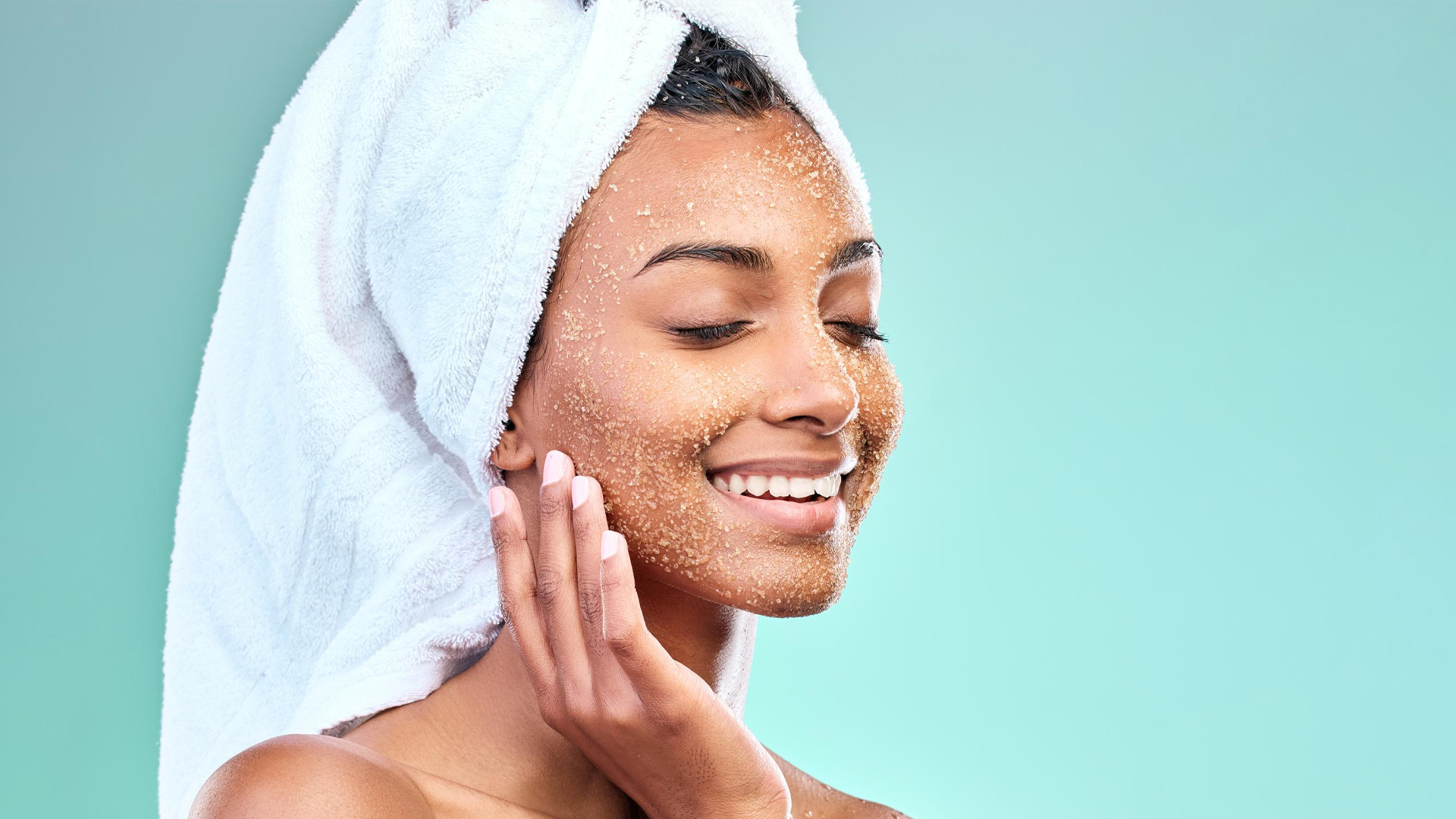Exfoliation is one of those magical skincare steps that can transform your complexion. It sloughs away dead skin cells, unclogs pores, and reveals smoother, brighter skin underneath. But while exfoliating might sound simple—just scrub and go—there’s more to it than meets the eye. Exfoliating properly is key to getting the benefits without irritating or damaging your skin.
If you’ve ever wondered how to exfoliate correctly, or if you’ve been unsure of the best exfoliation methods for your skin type, you’re in the right place. Let’s break down everything you need to know about exfoliating to ensure you get that fresh, radiant glow without the side effects.
Why Is Exfoliating Important?
Before we dive into the “how,” let’s quickly cover the “why.” Our skin naturally sheds dead cells every day, but sometimes that process slows down, leading to dull, dry, or uneven skin. Exfoliation helps speed up this natural turnover process, giving your skin a smoother, more polished look. Regular exfoliation can:
- Unclog pores: It helps prevent acne by removing dirt, oil, and dead skin that can block your pores.
- Boost circulation: Gently scrubbing your skin can increase blood flow, leading to a healthier, more vibrant appearance.
- Enhance product absorption: When you exfoliate, your skincare products (serums, moisturizers, etc.) can penetrate deeper into the skin, maximizing their effectiveness.
- Even out skin tone: By removing dead cells, exfoliation helps fade dark spots, hyperpigmentation, and sun damage over time.
Types of Exfoliation: Physical vs. Chemical
Exfoliation comes in two main types: physical and chemical. Each method has its benefits, but it’s important to choose the one that best suits your skin type and concerns.
1. Physical Exfoliation: Scrubbing Away the Dead Skin
Physical exfoliation involves the use of scrubs, brushes, or other manual tools that physically slough off dead skin cells. These can include products with tiny beads (like sugar or salt scrubs), exfoliating gloves, or facial brushes.
Pros:
- Instant results: You can feel the smoothness right away.
- Good for rough areas: Physical exfoliation is great for knees, elbows, and feet, as well as more resilient skin types.
Cons:
- Potential irritation: Scrubbing too harshly can damage the skin’s surface, leading to redness, sensitivity, or microtears, especially if you have delicate or acne-prone skin.
- Less effective for deep exfoliation: It may not penetrate deeply enough for concerns like fine lines or pigmentation.
How to Use Physical Exfoliants:
- Step 1: Start with clean, damp skin.
- Step 2: Apply a small amount of your exfoliator to your skin. Use gentle, circular motions to massage it into your face or body. Avoid pressing too hard.
- Step 3: After about 30 seconds to 1 minute, rinse off with lukewarm water and pat dry with a towel.
- Step 4: Follow with a hydrating moisturizer to lock in moisture and soothe your freshly exfoliated skin.
2. Chemical Exfoliation: Dissolving Dead Skin
Chemical exfoliation uses active ingredients (like AHAs, BHAs, and enzymes) to break down and dissolve dead skin cells, instead of physically scrubbing them away. Common chemical exfoliants include glycolic acid (AHA), salicylic acid (BHA), and lactic acid.
Pros:
- More even exfoliation: Chemical exfoliants provide a deeper, more even exfoliation without the risk of physical irritation.
- Targets specific skin concerns: Chemical exfoliants can help with acne, fine lines, and dark spots, depending on the ingredient.
- Gentler: When used correctly, chemical exfoliants can be less abrasive on the skin, especially for sensitive or acne-prone skin types.
Cons:
- Gradual results: You won’t see instant changes like with physical exfoliation, but over time, the benefits are more noticeable.
- Sensitivity to the sun: Chemical exfoliants can make your skin more sensitive to the sun, so you’ll need to wear sunscreen regularly.
How to Use Chemical Exfoliants:
- Step 1: After cleansing, apply a chemical exfoliant. You can use a toner, serum, or treatment mask that contains exfoliating acids. Start with a lower concentration, especially if you’re new to chemical exfoliation.
- Step 2: Apply a thin layer and allow it to absorb into your skin (usually for 20-30 seconds). There’s no need to rub it in—let the product do the work.
- Step 3: Avoid using multiple strong exfoliating products at the same time. For example, if you’ve used an acid serum, don’t use a physical scrub the same day.
- Step 4: Finish with a moisturizer and always wear sunscreen the following day to protect your freshly exfoliated skin.
How Often Should You Exfoliate?
Finding the right balance when it comes to frequency is essential. Over-exfoliating can lead to dryness, irritation, and damage, while under-exfoliating means you might miss out on the benefits.
General Guidelines:
- Oily Skin: 2-3 times a week with physical or chemical exfoliants to manage oil and prevent clogged pores.
- Dry Skin: 1-2 times a week, focusing on gentle exfoliants like lactic acid or hydrating scrubs.
- Sensitive Skin: Once a week, using a very gentle exfoliant. Opt for a mild chemical exfoliant or a sugar scrub with fine grains.
- Acne-Prone Skin: 2-3 times a week, but be cautious with physical exfoliants, as they can aggravate acne if used too harshly. BHAs like salicylic acid are great for targeting breakouts.
Tips for Exfoliating Properly
- Don’t Overdo It: Less is more! Exfoliating too often or too aggressively can irritate your skin, leading to inflammation or even more breakouts. Stick to a consistent routine and listen to your skin’s needs.
- Patch Test New Products: Whether you’re using a new physical scrub or a chemical exfoliant, always patch test on a small area of your skin before applying it to your face. This helps ensure that the product won’t cause irritation or an allergic reaction.
- Use Sunscreen: Exfoliating removes the protective barrier of dead skin cells, making your skin more vulnerable to the sun. Be sure to apply a broad-spectrum sunscreen with SPF 30 or higher every morning, especially after exfoliating.
- Hydrate After Exfoliating: Your skin needs extra moisture after exfoliation to replenish and soothe it. Always follow up with a nourishing moisturizer or hydrating serum to lock in hydration.
- Avoid Exfoliating Active Breakouts: If you have active acne or broken skin, avoid scrubbing the area, as this can irritate the skin further. For chemical exfoliants, go for a gentle salicylic acid treatment that can target acne without physical abrasion.
- Know Your Skin Type: Tailor your exfoliation routine to your skin’s needs. If you have sensitive skin, opt for enzyme exfoliants like papaya or pumpkin instead of harsh scrubs. For dry skin, choose a hydrating, gentle exfoliator with moisturizing ingredients.
Conclusion: Exfoliate for Glowing, Healthy Skin
Exfoliating properly can be a game-changer for your skin, helping you achieve a brighter, smoother, and more radiant complexion. Whether you prefer physical scrubs or chemical exfoliants, the key is to be gentle, consistent, and mindful of your skin’s needs. And remember—like all things in skincare, balance is essential. Don’t go overboard, and always listen to what your skin is telling you.
So, the next time you’re reaching for your exfoliating product, think about the best way to pamper your skin and unlock that healthy glow. After all, beautiful, fresh skin starts with the right care!





